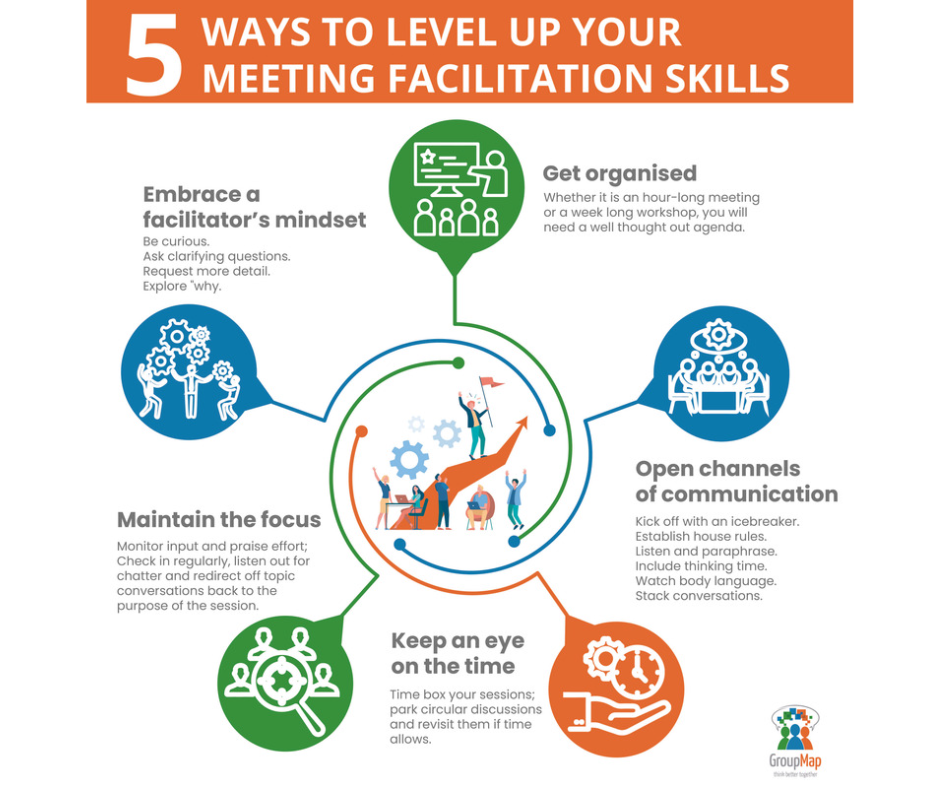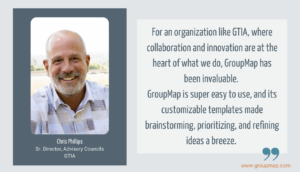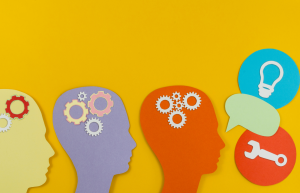
With meetings and workshops now commonplace, facilitation is considered a highly desirable workplace skill; of course, it’s no surprise given the incredible difference a good facilitator can bring to such sessions.
Additionally, when one considers current employment trends, facilitation skills appear to be of even greater value; “empathy, judgement and leadership” being both in-demand skills, and core to the fabric of a good facilitator.
So whether you’re looking for a way to deliver greater value at work, or you’re keen to enhance your resume, honing your facilitation expertise is a great place to start.
At GroupMap, helping people think better together is what we’re all about. Here’s what we think makes a great facilitator along with some practical steps to help you get there.
What is a Facilitator?
A facilitator is a person who enables a group of people to work together more effectively so that they may deliver high-quality outcomes.
Those outcomes could be a range of things, including –
- capturing and exploring ideas
- making decisions
- crafting a shared understanding
- finding a solution to a problem
- designing a product
- achieving a consensus
What Makes a Great Facilitator?
A great facilitator sets the stage so that the group can perform together at their very best. The facilitator does this by supporting the two key elements of a collaborative session –
1. The Collaborative Process
When building a process a facilitator considers –
- the outcome required of the session and the date by which it is needed
- who needs to be involved
- what needs to happen at the beginning, middle and end of the session to deliver that outcome
- how time should be allocated
- if the session is to be in-person, online or both
- when the session is to be held in order to deliver the outcomes when they are needed
2. The Collaborative Environment
A collaborative environment is one conducive to participation, cooperation and focus, and as a result, high-quality outcomes are delivered faster. They are psychologically safe spaces in which participants feel acknowledged, accepted and respected.
In shaping a collaborative environment, a facilitator will demonstrate –
- Respect: by recognising and acknowledging the intrinsic value of each participant in the session
- Empathy: by putting aside their own context in order to be open to embrace a genuine understanding of that of the participant
- Neutrality: by putting aside any bias, prejudice or agenda, so that only the inputs of the group shape the outcomes of the session
The facilitator will foster open channels of communication, ensuring –
- input is honest
- participation is balanced
- conflict is respectfully addressed
A great facilitator remembers that, despite the fact all eyes may be upon them, they are not the star of the show; the stars are the participants, and it’s their time to shine.
What You Can do to Become a Better Facilitator
1. Get Organised
Whether you’re delivering an hour-long meeting, a half-day workshop, or week-long training, you need some sort of overview or agenda that outlines –
- the purpose of the session
- who is participating
- when and where the session will happen
- the steps that constitute the session
- a timeframe
If you find yourself pulled in to deliver a session that isn’t supported with an outline, take the time to construct one with the group there and then. A quick brainstorm will ensure the purpose of the session is clear and the group is focussed; the smooth delivery of the session will make up for the time you spend with this initial gathering of thoughts.
- send out calendar invitations along with the session overview well in advance.
- lock in the resources you need to deliver the session
- book a physical space, and/or prepare a virtual space
- gather your equipment (pens and flip charts or online collaborative tools)
2. Open Those Channels of Communication
- Kick off with an icebreaker to warm the group up; icebreakers are known to increase group engagement and focus.
- Take the time to work with the group to establish the ‘house rules’ for the session. When members of a group know what they can expect of others and what is expected of them, the likelihood of participation increases while an environment of psychological safety is supported.
- Don’t do all the talking; you are the conductor not the orchestra.
- Deliver information in easily digestible steps; too much information will be overwhelming.
- Allow for silence and thinking time. It allows individuals to consider their responses before sharing them.
- Listen and paraphrase what is said to ensure you have understood things correctly.
- Look to the body language of participants for additional cues.
- Draw out and make space for reticent or quieter participants to contribute, and stack conversations to support balanced participation.
3. Keep an Eye on the Time
- Allocate a time to each of the session steps, and stick to it!
- Ensure participants are aware of the timeframes within which they are working.
- Call out and wrap up circular conversations.
- Park discussion if consensus can’t be reached and circle back if time allows.
4. Maintain the Focus
- Use the number of inputs generated by the group as an indicator of their engagement; positively reinforce effort, it will inspire more participation and reinforce focus.
- Check in regularly to assess energy levels; when energy wanes so does focus.
- Listen out for chatter; it is a helpful barometer that can point to –
- The completion of a task – so move the session on to the next step
- Disengaged and distracted groups – so remind participants of the session’s purpose
- If a participant seems off-topic, explore if their opinions support the purpose of the meeting.
5. Embrace a Facilitator’s Mindset
- Be curious. Use questions and phrases such as –
- What did you mean when you said…
- Tell me more about…
- What would that look like?
- Adopt the mantra “it’s not about me”. Despite our very best of efforts, possibly only the most self-actualized of people are able to consistently exude respect, empathy and neutrality; this is a work-around until you get there.
Start Facilitating Today
GroupMap is an online collaboration tool designed by facilitators for facilitators. It helps you construct and deliver a polished collaboration process, and includes features that support the curation of a collaborative environment too.
GroupMap can be used to support face-to-face, virtual and hybrid sessions. It captures data as you go; there’s no tedious note transposing at the end of your workshop because GroupMap does it all for you!



